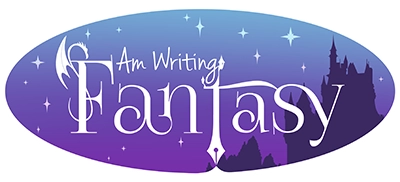Subplots can add to the interest and complexity of a novel or they can completely derail the plot. But why one subplot works and not another isn’t always clear.
There are a LOT of blog posts on the uses and pitfalls of subplots. Go ahead, run a Google search to see! I’ve put together my own ideas from years as an avid reader, taking note of when I yawn – or grow annoyed – over a diversion in a novel, and as a writer who loves packing a lot into a story.
First, what do I mean by subplot? A general definition is simply a secondary plot in a novel. Well no wonder that leads to confusion and events that feel unconnected to the story! I like Wikepdia’s definition that describes a subplot as “a secondary strand of the plot that is a supporting side story for any story or the main plot. Subplots may connect to main plots, in either time and place or in thematic significance. Subplots often involve supporting characters, those besides the protagonist or antagonist.”
Now we are getting into why some subplots work and others actually take away from the story.
To me, a subplot should (not may) connect to the main plot in some way. The idea of supporting the main plot is great! Otherwise, if the subplot has absolutely nothing to do with what is going on in the story, why is it in your novel? THAT has become my rule of thumb.
When I’m working on a novel if a side action develops, I stop and ask myself what impact it has on the main plot. Will it slow down a character or speed up the action? Will it cause confusion? When will whatever strange journey this subplot leads me down click into the main plot with a satisfying ‘ah ha!” If never, it doesn’t get a place in the novel. Maybe I’ll use it for a short story, save the idea for another novel, or see if a way to fit it in will happen – maybe using the main characters instead of secondary ones?
Finding a desire to include a subplot is an opportunity to look at the main plot as well. As the writer, why do you feel a need for a diversion? Are things too tense and some humor is needed? Can the main characters create that without something unrelated happening? Maybe the main plot need tweaked. Has it bogged down and become boring? Or perhaps a subplot is exactly the level of complexity that the main plot needs.
Working on Games of Fire has added a new worry with subplots: the story starts with three!
Games of Fire takes place after my epic fantasy series the Rise of the Fifth Order ends. It continues in the the same world using many of the same characters. I’ve jumped into other series before that are continuations and been lost, and not just because of references to prior events. I don’t know the characters, or care much about them yet, and when the action starts, it is happening before I’m ready!
Writing the beginning of Spark of Defiance, book 1 of the series, gave me the same feeling. As the writer, I knew the characters and that the three, equally weighted plot lines led to something big. But the reader in me said ‘ick.’ There was nothing strong and riveting to grasp hold of. So even though I’m only on chapter 9 of a story that will exceed 30 chapters, I reorganized the beginning.
The first minor plot that develops into action became my main plot. The others are subplots that affect the problems developing in the main one, adding fuel to the fire. I rearranged the chapters so that the main plot took paramount place and a reader would recognize the growing story there without getting lost with new characters and unrelated information. I might, not sure yet, even flesh out the beginning of the main plot more. I want it to be the obvious entry point to the story. I simply might need to devote a few chapters to getting it going before bringing in the first subplot. I’ll keep that in mind as I continue writing.
For now, I’m much happier with the beginning. I’m not lost when I read the story: the ‘hero’ and problem are well defined. The subplots with re-introduced characters thread their way into a main strand that becomes quite the piece of knotwork. But I’ll have to keep an eye on everything so that it develops slowly enough a reader doesn’t give up before they see how it all comes together! A complicated storyline across a trilogy can be tricky.
What about you? Do you use subplots? When and why?










I admit that I’ve been thinking about this for a little while, and I’m still not sure what to think of subplots. Since I’m doing short stories right now, that’s thankfully not a bad thing, but for longer stories… mm, I’m torn.
I think I mostly agree with your idea that subplots should connect to the main plot in some way, but I think that I’d make the point that it’s okay to have them connect tangentially or thematically, not just in terms of merging the stories together. This probably mostly depends on the genre you’re writing in, but in some of them- thrillers, horror, and sci-fi immediately jump to mind- having a subplot that has impacts in the main plot, even if it doesn’t directly connect, can work. A subplot in a horror story that shows off the main villain and builds the stakes of the subsequent encounter with the main character can be very powerful, for example, and having two different plots on opposite sides of the galaxy that highlight the two main forces that eventually meet in the final climactic fight work well, even if the characters in those subplots don’t meet directly.
Or to put it another way… the subplots have to exist for a reason, and that reason must enhance the story and the theme of the story. If it does, then the subplot is likely going to be something the reader enjoys- and perhaps more importantly, allows a different perspective on the story, which can really deepen and accentuate the world that the author’s building. But if it’s a “Oh, let’s just throw something else in here!” thing, then that’s not likely going to work well at all.
…which is basically restating your post, but you get what I mean. *laughs* The fact that there’s so much talk about subplots tells me both that there’s a lot to use them with, and also that there is no ‘right answer’ that’s universally applicable. So, just being aware of the potential downsides and benefits, and using them or not as seems best, seems to be the best option. How you came to this post is really the best rule for anyone to follow- keep in mind what did or didn’t work for you in someone else’s story, and you’ll have a solid idea for what likely will or won’t work in your own.
I think you went through the argument about the same route I took when I decided to write the post, Benjamin! There is always the example that works but doesn’t fit the “rule” but the ones I’ve read that feel like I’m reading an entirely different novel set inside a story drive me batty. lol!